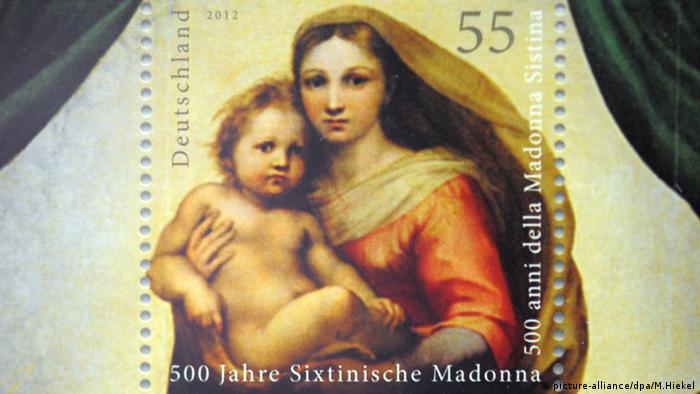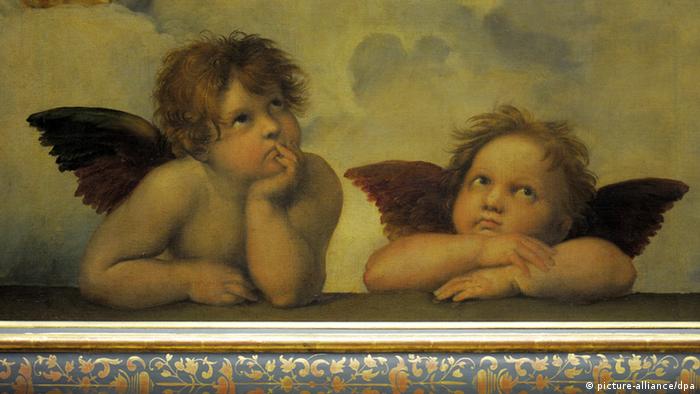The 500th anniversary of the death of Italian Renaissance master Raphael is marked with a blockbuster exhibition in Rome.
Advance ticket sales for the show at the Scuderie del Quirinale have already broken all records.
Raphael is believed to have died on his 37th birthday. But the cause of the Renaissance master painter’s death remains unclear: Was it a venereal disease or a mysterious fever?
Five hundred years after his death in 1520, another cause of fever, the new coronavirus, might lead to the cancellation of this ambitious exhibition in his honor, as Italy has now closed schools and universities.
The exhibition, to be held from March 5 to June 2, is insured for €4 billion ($4.5 billion), but no money can guarantee that the biggest coronavirus outbreak outside of Asia will not interrupt the three-month show.
Meanwhile, more than 60,000 tickets were sold in advance, a record number for the Scuderie del Quirinale museum in the former stables of today’s presidential palace in Rome.
The Italian curators spared neither expense nor effort for the exhibition, bringing together for the first time more than 120 masterpieces by Raphael, as well as numerous works by artists whose work was significantly influenced by the world-famous Renaissance painter.

“Madonna Tempi,” on loan from Munich’s alte Pinakothek
Raphael’s return to Rome
Years of preparation and international cooperation were needed to pave the way as the Scuderie has no permanent collection and is dependent on loans. For “Raffaello,” as the show is called, loans came from the most renowned museums worldwide, including the Louvre, the British Museum, the MoMA, the Vatican Museums, the Prado, the Florentine Uffizi Gallery and even Queen Elizabeth II. Not always without controversy: The Uffizi Scientific Council, opposed to the transport of a specific portrait, resigned in protest over the decision to loan one of the museum’s Raphael paintings for the exhibition in Rome.
The ancient painting is nevertheless included in the show, as the Uffizi director determined that following three years of extensive restoration, the work would survive the journey. The portrait of Pope Leo X now hangs alongside the portrait of his predecessor, Pope Julius II, on loan from the National Gallery in London.
Raphael, referred to as the “God of Art” by his contemporaries, may not have lived a long life, but he did manage to garner commissions for paintings by two popes.
The two popes were Raphael’s main patrons and inspired him to create his most famous masterpieces, including various murals in the Vatican’s chambers. The highly talented painter was also courted outside the Eternal City, Rome; his portrait of Count Castiglione, on loan from the Louvre, is also showcased in the Raphael exhibition.

The “School of Athens” fresco in the Vatican’s Apostolic Palace
Death and life
The exhibition that runs until June 2 begins with Raphael’s death in Rome in 1520, and goes back in time to present the artist’s works and life all the way back to his birth in Urbino in 1483.
The focus is not only on Raphael’s paintings and drawings but also on his years serving as activities as Papal Prefect of Antiquity. Raphael’s works are placed in a contemporary historical context by other exhibits — sculptures, ancient artifacts, Renaissance sculptures, documents and works of applied art.
“This is the largest exhibition ever dedicated to Raphael,” Eike Schmidt, director of the Uffizi museum, told German press agency EPD. Many objects are returning to Rome for the first time after the early death of the master painter, he added. “His wonderful works point beyond the earthly,” the art historian said — and that is why they are “tremendously significant” even today.
Perugino (1445-1523), the most important master of the Umbrian School, taught Raphael how to draw and paint. Later, Raphael went to Florence and then Rome, where he became court painter to the popes.
Now, 500 years after his death, Raphael — or Raffaello Sanzio da Urbino — is still considered to be one of the greatest painters in European art history. Along with Leonardo da Vinci (1452-1519) and Michelangelo Buonarroti (1475-1564) he forms the triumvirate of the Central Italian High Renaissance.

The famous Sistine Madonna on a German postage stamp
Born in Urbino in 1483 as the son of a court painter, Raphael lost both his parents at a young age and was raised by an uncle. By the time he was 17, his talent could no longer be overlooked: From 1500 until his appointment to Rome he worked mainly for wealthy patrician families and created religious devotional pictures, altars and portraits.
Until 1504 he drew and painted in the Umbrian style, then he moved to Florence to study Leonardo da Vinci and Michelangelo
During the four years he spent in Florence and Perugia he gained a reputation as a portraitist, painter of altarpieces and especially of Madonnas, which he painted in countless variations on wood, canvas or plaster throughout his life. In Florence he found his own Madonna painting style.
Raphael in Rome
In late 1508 Pope Julius II summoned Raphael to Rome to take part in the painting of the papal rooms. Inspired by Raphael’s depiction of the Disputa in the Stanza della Segnatura, Julius II entrusted him with the responsibility of furnishing entire rooms. After the death of the pontiff in 1513, the Medici pope Leo X allowed the campaign to continue. For 12 years Raphael shaped the production of art at the papal court in Rome.

Found on postcards and T-shirts worldwide: the cherubs in the “Sistine Madonna” painting
After Michelangelo’s return to Florence in 1516, Raphael was the undisputed leader among the painters, architects and preservationists of the Eternal City, creating masterpieces that established his reputation to this day. He portrayed friends and rich patrons, created altarpieces and designed the famous tapestries for the Sistine Chapel.
Dead at age 37
Raphael died on April 6, 1520 at the age of 37. His art has remained exemplary for generations of artists.
Raphael’s Madonnas are on display until April 26 at Berlin’s Gemäldegalerie in a show that opened in December. Also in the German capital, a cycle on Raphael’s life in January showed etchings by Johannes Riepenhausen (1787-1860), and in February, the Kupferstichkabinett presented its Raphael masterpieces. Both the National Gallery in London and The National Gallery of Art in Washington, D.C. plan Raphael exhibitions next fall.
Where to stay in Rome:

